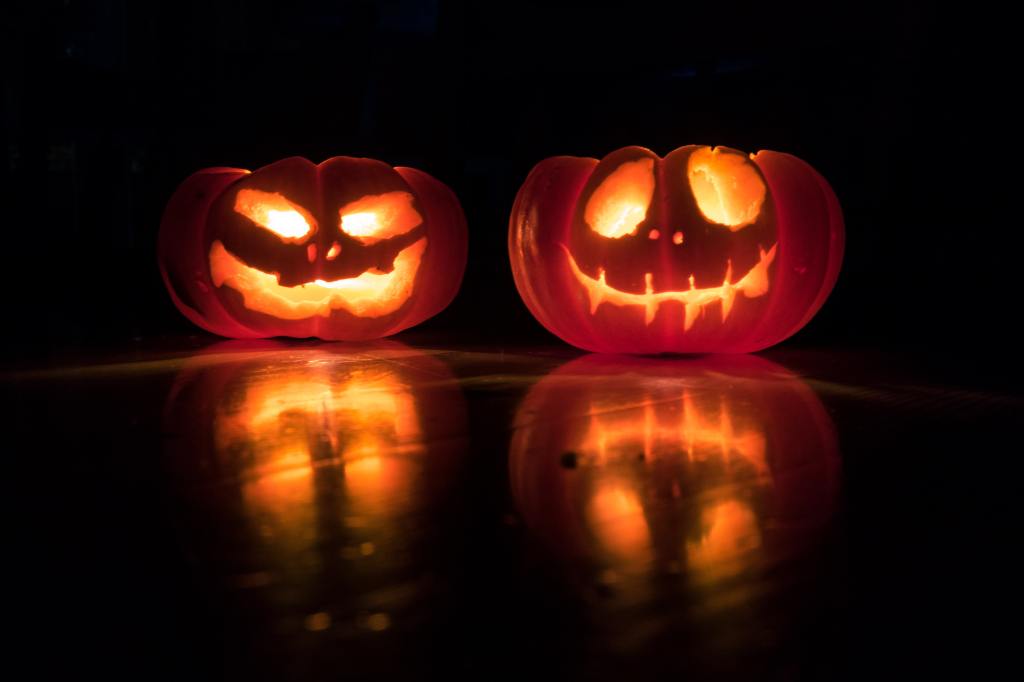
Before I’m burned at the stake, let me explain.
The roots of Halloween are found in the ancient Gaelic festival of Samhain (pronounced “SAHwin” – obviously phonics is somewhat different in Gaelic) The Samhain festival was celebrated on November 1, but actually started on the evening of October 31. It celebrated the harvest but also welcomed what was thought of as the dark half of the year. The ancient Irish and Scottish believed that the boundary between this earthly world and the afterlife became especially thin on Samhain, enabling communication with the dead. The ancient Gaelic population believed there were many gods and fairies. Samhain, in turn, involved many ritualistic ceremonies enhancing their connection to the spirit world, causing people to leave offerings on their doorsteps or in the fields for the spirits and fairies.
The Celts often celebrated Samhain by wearing animal fur costumes as a disguise against ghosts and spirits. Their celebrations included drunken feasts (yep, they were Irish) where they made lanterns by hollowing out gourds and placed candles within. The people were expected to join the Druid priests who built community bonfires where prayers were offered and cattle sacrifices were made. Each family was expected to bring part of the fire back to their home to relight their home hearth.
The English name “Halloween” can be traced back to medieval Christianity. “Hallow” comes from the Old English word for holy. At the time, “All Saints’ Day” was called “All Hallows’ Day” and the day before, when an evening mass was held, was “All Hallows’ Eve”, which eventually transitioned to “Halloween” because after all, it was quite a mouthful. It is believed that the mass was initiated to give the evening perspective. Nothing takes your mind off of pagan revelry like taking communion and listening to a homily.
Christian leaders were also responsible for the official date of Halloween. In the 7th century, Pope Boniface IV began the tradition of All Saints Day when he dedicated the Pantheon in Rome to the Saints. However, the date was May 13. One hundred years later, Pope Gregory III changed the date of All Saints Day to November 1 when he dedicated a chapel in St. Peter’s Basilica to the Saints. This date, however, was apparently more of a local or regional change. Finally, in the 9th century, Pope Gregory IV added All Saints Day to the Christian calendar, extending the date to people everywhere. With All Saints Day solidified on November 1st, All Hallows’ Eve was destined for October 31st, which coincidentally fell on the anniversary of Samhain.
With the spread of Christianity, the mystical rituals of earlier Halloweens became more lighthearted. People dressed as the Saints and recited songs to one another. Children went from door to door asking for “soul cakes,” which were biscuit-like treats. Soul cakes actually originated as a part of All Souls’ Day, a third day of celebration on November 2, but overtime morphed into the Halloween night concept we know as trick-or-treating. The tradition of dressing as Saints shifted when young Scottish and Irish pranksters opted to dress up in scary costumes in order to frighten their neighbors. Soul cakes slowly transitioned into candy, much to the delight of children and the manufacturers of chocolate better choice.
So there you have it, well, sort of.
Even though Halloween can be filled with light hearted fun; and even though its date, name, and practices were heavily influenced by the medieval church; Even though Halloween is a time where children can get tons of chocolate and candy that they’re still eating till way after Christmas much to the dismay of their parents and to the delight of dentists everywhere; even though we can fill the Halloween and Fall season with all of these interesting facts and fun information, it is good to remember that Halloween, or Samhain, is still a day and time festival of the dead celebrated by Druids, Wiccans, Satanists, and Pagans. Even as we take part in simple family friendly festivities, let’s all remember who we are and whose we are and make a difference for God and for good wherever we may be and in whatever we might do.
But you are not like that, for you are a chosen people. You are royal priests, a holy nation, God’s very own possession. As a result, you can show others the goodness of God, for He called you out of the darkness into His wonderful light. (1 Peter 2:9)
Be safe out there. Be a light. Resist Evil. Make a Difference.
*Image Courtesy of David Menidrey